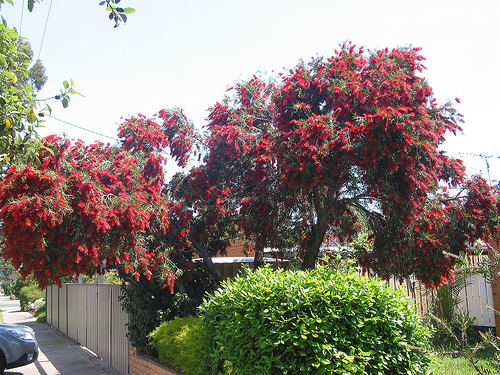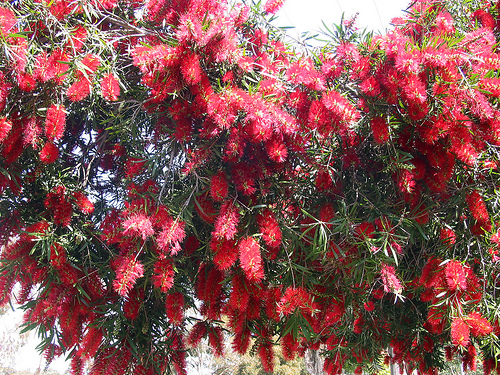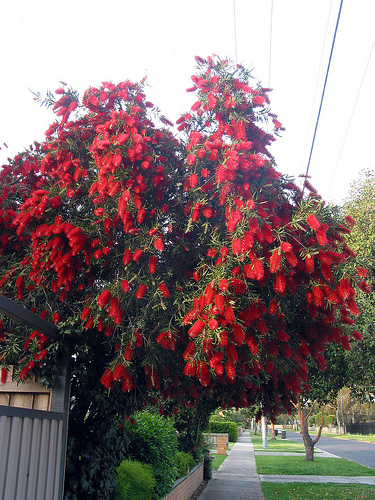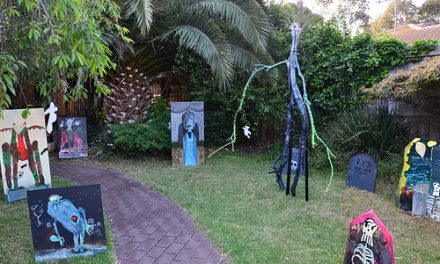There is a type of trees that bear uniquely-shaped bright red flowers and can be found in great abundance on both sides of the railway tracks as well as along many streets in Altona. I was wondering what these trees are called and was not able to find the answer from Google search. When I asked my next-door neighbour last Saturday, she told me the tree is called bottebrush. Indeed, the cylindrical flowers with their bristle-like stamens closely resemble a bottle brush.
The genus is Callistemon, which means “beautiful stamens”. It comes under the family Myrtaceae and has 34 species, most which are endemic to Australia, along the east coast and south-west and with 4 species also found in New Caledonia. Callistemon was recently placed into the genus Melaleuca.

Callistemon viminalis or the Weeping Bottlebrush
The tree normally flowers from October to December during Spring and early Summer but may also flower at other times of the year under the right conditions. The flowering seems to have passed its peak in Altona, with many of the stamens being shed and the red taking on a duller colour.
The flower spikes are made up of many individual flowers and each stamen consists of a long coloured stalk called the filament which holds the pollen on its tip. It is these filaments which give the flower spike its colour and distinctive “bottlebrush” shape. In most species, the filaments are red but can be yellow, green, orange or white in other species.
Each flower produces a small, woody fruit containing hundreds of tiny seeds. These fruits form in clusters along the stem, and are usually held on the plant for many years before being released. But in some species, the fruits open after about a year. Fire also stimulates the opening of the fruits in some bottlebrushes.
The plant is relatively slow-growing though the larger species can grow up to 15 metres tall. The new leaves of many bottlebrushes are very ornamental – they are often coloured, linear to lanceolate, covered with fine, soft hairs in some species and not shed during winter.
Bottlebrushes are sometimes used as food by the larvae of hepialid moths of the genus Aenetus including A. ligniveren. These larvae burrow horizontally into the trunk then vertically down.
I love my street in Altona, its serenity and wide open spaces, and this is the third post showing this street (Post 2 and Post 1).






